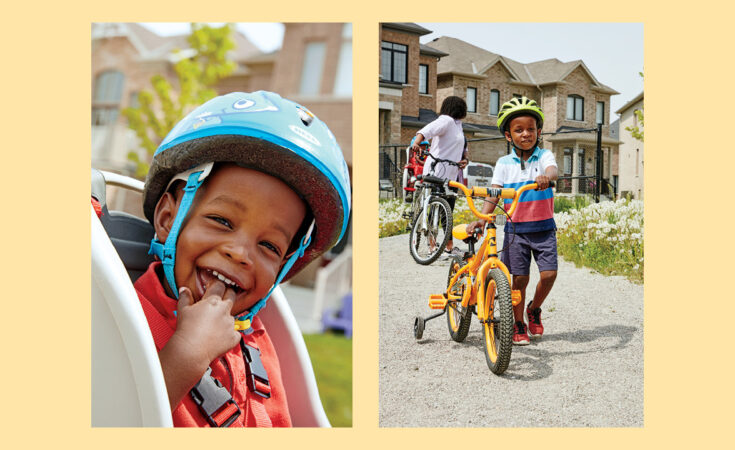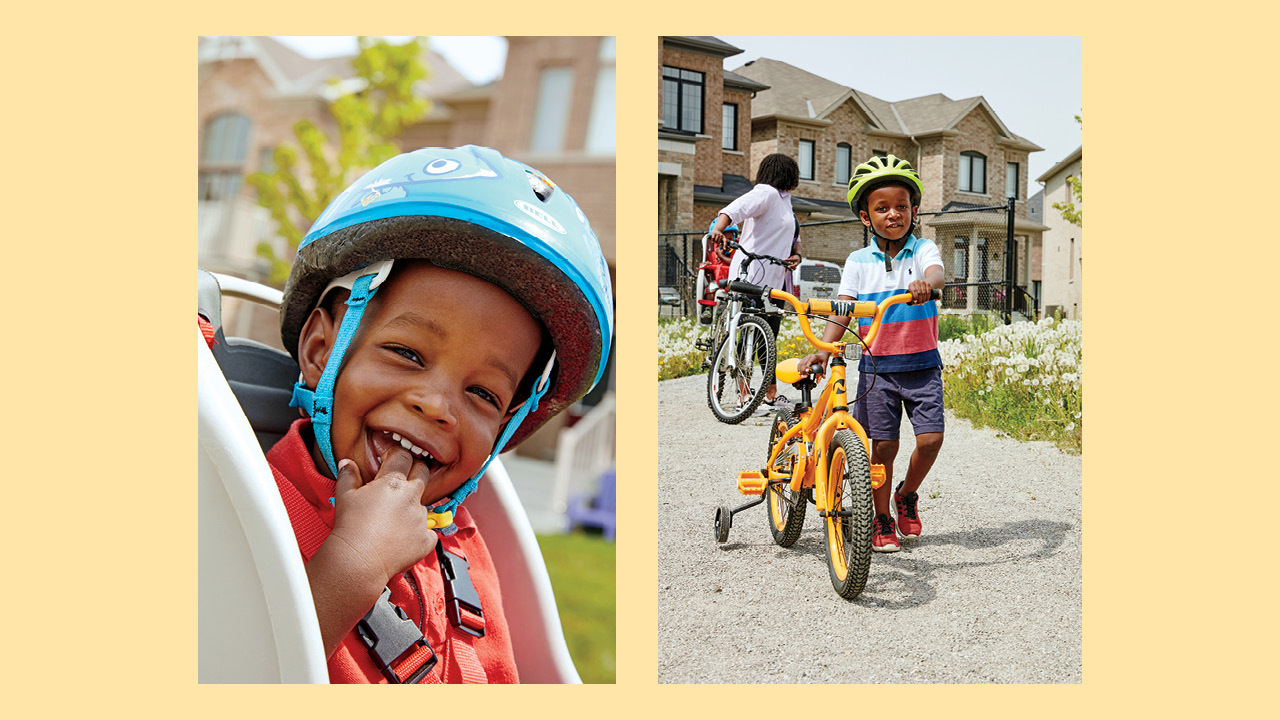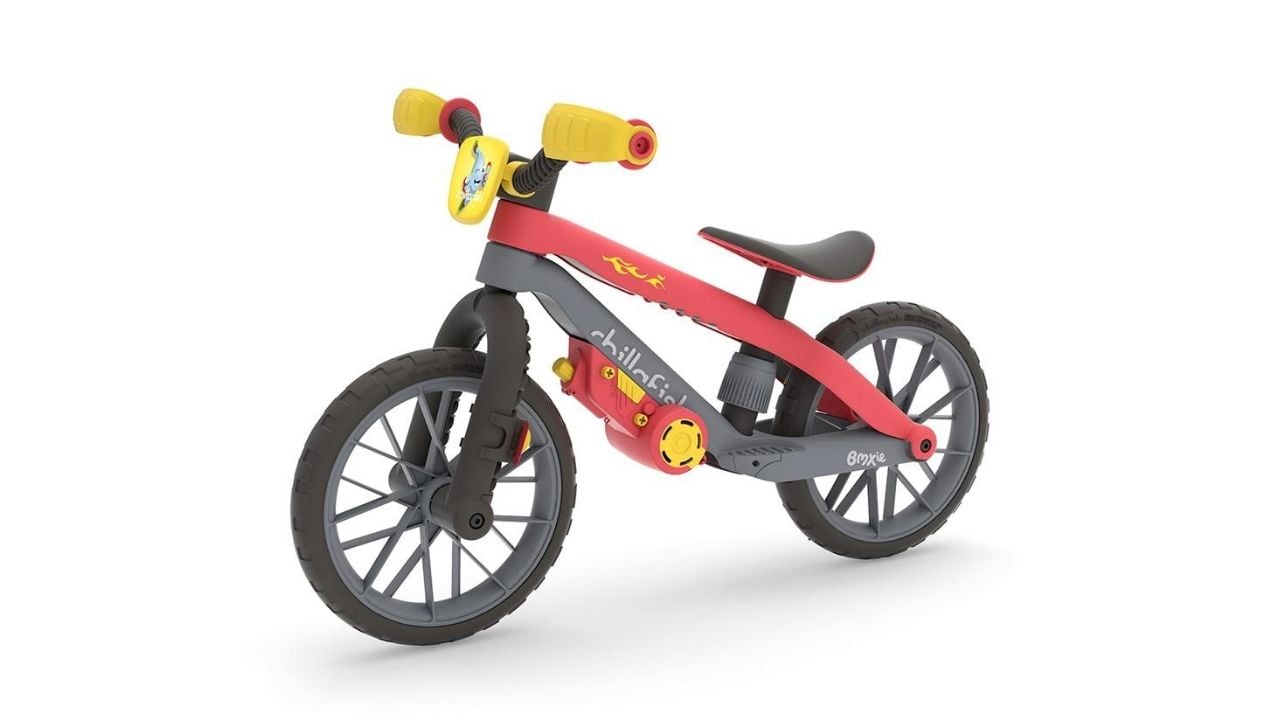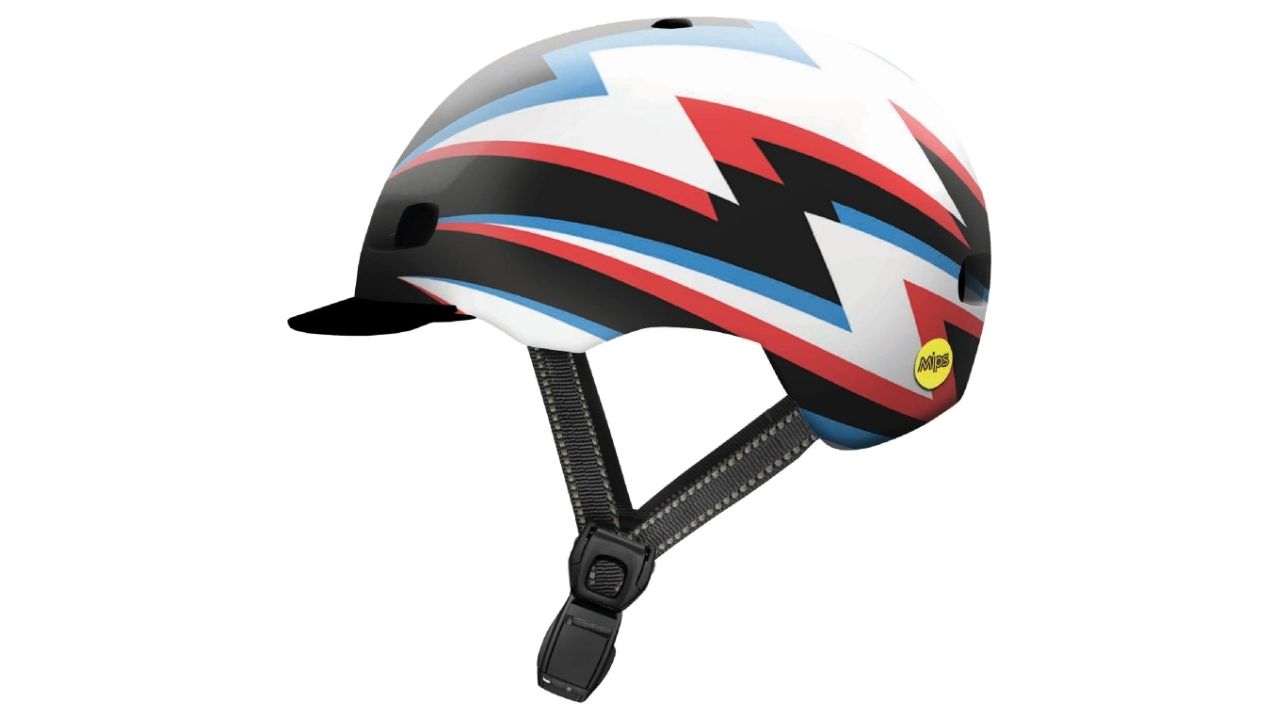Biking is a great way to get your family outdoors and active this summer. From baby to big kid, here’s what you need to get started.
Whether you’re an avid cyclist or a recreational rider, biking with kids is a whole new terrain. But it’s a great way to enjoy some fresh air. And with a bit of planning—and some safety tips—you’ll be rolling in no time!
Riding with your kids
There are many ways to enjoy cycling with your family even before your kid is old enough to ride on their own. Mounted child seats and bike trailers are your choices for tots over the age of one. Babies under 12 months old cannot safely be transported inside bike trailers. Make sure your little one can sit unassisted and support their head while wearing an approved and properly fitting lightweight helmet. Choose a bike seat with a high back, shoulder harness and lap belt so your child remains supported even if they fall asleep. For older kids who can cycle independently but can’t handle a longer ride, consider a tow bar or rope, which hitches their bike to yours; they can pedal but you still do the heavy lifting.
Helmets
Wearing a helmet is the best thing you can do to stay safe while cycling, and in many provinces, it’s the law. A helmet can reduce the risk of serious head injury by 60 percent, according to Parachute, a Canadian charity that focuses on injury prevention.
Helmet fit is key. For an easy check, try out the 2V1 rule: your helmet should sit two fingers above your eyebrows, the straps should create a V-shape around your ears, and there should be enough space for one finger in between your chin and the chinstrap. It’s always best to try before you buy.
Be sure to purchase a certified helmet: Look for a sticker or label on your helmet that says CSA (Canadian Standards Association), ANSI (American National Standards Association), CPSC (Consumer Product Safety Commission), ASTM (American Society for Testing and Materials) or Snell. You need to replace kids’ helmets every five years or after any type of collision; adults should replace their helmets every three to five years.
Choosing a bike
Balance bikes are a great way to introduce your child to their first set of wheels at around 18 months, when they are walking and running confidently. These bikes don’t have pedals or training wheels, but they teach important skills like balance and steering. Once they’ve mastered those, moving to a two-wheeler will be much easier. If your kid doesn’t take to a balance bike, a traditional trike might be more their speed.
When shopping around for a two-wheeler, visit your local bike store and have your kid test out different options. You’ll know the size is right when your child can straddle the bike and have both feet firmly planted on the ground. Make sure that they can easily reach the handlebars and that the seat can be adjusted; it’s important that they feel comfortable on the bike and that it isn’t too heavy for them. (Tip: Kids’ bikes are measured by the wheel diameter. If you have to shop online, use a size chart to help figure out what size wheel they’ll need based on their age and height.)
You may be tempted to buy a bigger bike for your child to “grow into,” but this can make it harder for them to learn. “Having a bike that’s too big to control is really frustrating for their skill-building,” says Stephanie Cowle, director of knowledge translation at Parachute, “and could actually turn them away from learning to enjoy cycling as an activity.”
For their first two-wheeler, kids don’t need anything fancy like shocks, gear speeds or suspension. You can choose a bike with either pedal or hand breaks, depending on how comfortable your child is peddling. A beginner bike can run you anywhere between $100 to $300.
Where to ride
Children under the age of 10 shouldn’t be riding on roads; stick to trails and the sidewalk. Always stay in single-file; it’s best to ride behind your kids so you can keep pace with them and watch for oncoming traffic, such as pedestrians or other cyclists. Once kids are old enough to ride on the road, make sure that everyone understands how to read road signs, knows the hand signals for changing directions and stopping, and stays on the right side.
Stay visible
Wearing bright colours and attaching a flag to your bike or trailer is an easy way to help you stand out. To increase visibility, Cowle recommends flashing lights and reflectors. “These should be on your bike at all times, whether you’re riding day or night,” she says.
In some places, lights and bells are the law; check your provincial rules to see what’s required.
Great gear for family biking
Photo: Courtesy of Thule
Thule Coaster XT, $500, sportcheck.ca
Photo: Courtesy of Vilac
Vilac Bike Bell, $15, well.ca
Photo: Courtesy of BMXie
BMXie Moto Red Balance Bike, $120, mastermindtoys.com
Photo: Courtesy of Nutcase
Nutcase Little Nutty MIPS Helmet, $90, mec.ca
Photo: Courtesy of Bellelli
Bellelli Mr Fox Standard Rear Seat Bicycle Carrier, $170, altitude-sports.com
Photo: Courtest of Coco Village
Classic Bicycle, from $260, cocovillage.com









































